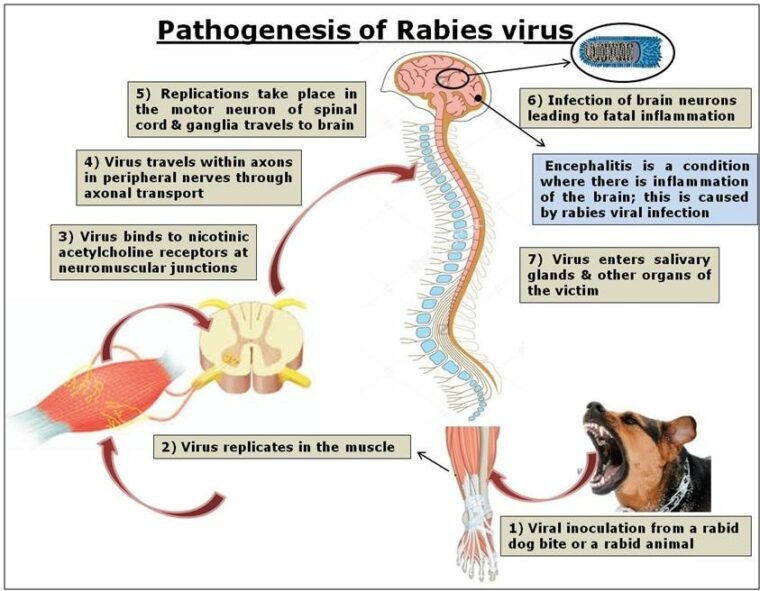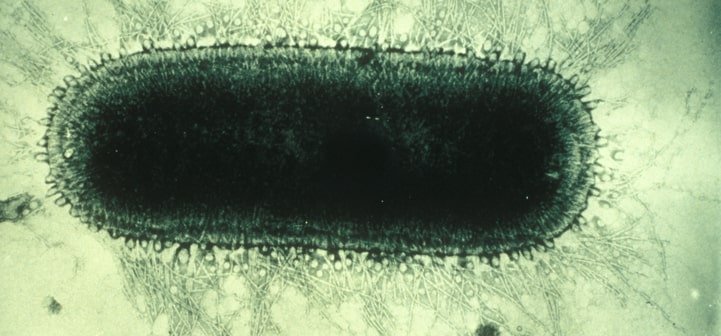A new Italian study cautions that the rabies virus could mutate, either naturally or artificially, into an “apocalyptic” disease that turns humans into hyper-aggressive “zombies.”
Admittedly, the paper approaches the theoretical idea that, since the rise of COVID-19, the world must begin “to think-out-of-the-box” when it comes to large-scale epidemics. While rabies will not cause a severe zombie apocalypse today, the paper argues that “it would be theoretically possible by either natural or artificial virus engineering” to produce a viral strain of rabies that could transmit human to human. It is possible that the virus could be tweaked to incubate faster, have “enhanced neuro-toxicity,” and “a predisposition towards developing highly aggressive behaviors.”
Background: What is Rabies?
Rabies is predominantly spread and sustained by the Rabies Lyssavirus, a virus belonging to the Rhabdoviridae family. Like other viruses, such as COVID-19, the lyssavirus is believed to have originated in a bat population that transferred the virus to other mammals such as rodents and dogs.
The most common method of infection occurs when an infected mammal scratches or bites another mammal. The virus is typically passed through saliva. According to the World Health Organization, for predominantly developing countries, roughly 99% of cases are caused by infected dogs attacking humans. In America, where rabies is relatively rare in the canine population, bats remain the virus’s key transmitter.
Rabies typically takes on two forms in humans. Roughly 20% of cases are paralytic and cause the body to shut down slowly. If untreated, the patient eventually loses consciousness and dies. The more common type is “furious rabies,” which causes the patient to become hyperactive, excitable, and, at times, aggressive. Hydrophobia (fear of water) is also a common symptom, and aerophobia (fear of fresh air) may also occur. If left untreated, the patient will die within a few days of the onset of symptoms to cardio-respiratory arrest.


Analysis: Can Rabies Cause Zombification?
In 2011, the Center for Disease Control created a graphic novel and a series of posters and blog posts highlighting how it would handle a possible zombie outbreak. Mostly a tongue-in-cheek project, the CDC provided the public a view into how they generally prepare for and react to any large-scale epidemic. That same year, several junior officers from a Department of Defense training program put together a tactical plan on how a government would deal with an active zombie threat. While zombies are a fun way to examine emergency preparedness, the eerie reality is that significant outbreaks of novel viruses can catch any nation off guard.
The study explores a few key aspects of how rabies, which is already linked to zombification via increased aggression and transferred via biting, could become a world-ending disease that brings about the total destruction of the human species.
“It is now widely acknowledged that many viruses are characterized by naturally occurring high mutation rates, which induce constant changes as reliable means for escaping host defenses or facilitating their transmission to other susceptible hosts,” the study explains. “Rabies virus makes no exception to this rule…a vast array (up to 100) of antigenic variants of this pathogen in a wide range of animal hosts and geographic locations” exists. The study further explains that the slightest evolutionary change across these variations can alter the virus in many ways.
“Even single amino acid mutations in the proteins of Rabies virus can considerably alter its biological characteristics, for example increasing its pathogenicity and viral spread in humans, thus making the mutated virus a tangible menace for the entire mankind,” the authors state.
The paper also explores how the Rabies Lyssavirus could theoretically be altered in a laboratory to become weaponized. Clearly, fans of zombie movies and video games, the study’s authors argue that “an equal threat may come from the science of genetic engineering, which would reproduce the theatrical scenario depicted in the movies of the Resident Evil saga.”
While advances in genetic engineering have created the possibility for scientists to develop some pretty nasty viruses in a lab, this study falls off the rails a bit, claiming that the 2003 outbreak of the SARS virus “might” have been a biologically engineered virus. While the SARS outbreak has often been used as an example of how governments would deal with the possible use of such a bioweapon, no conclusive evidence exists that proves SARS was artificially engineered.
Regardless, the study suggests that since rabies already causes symptoms such as hyperactivity and aggression, it is theoretically possible that the virus could be modified to ramp up those tendencies and create a situation where humans would bite other humans.
“Despite incidence and mortality of rabies disease have both markedly declined during the past three decades, and irrespective of whether the genetic code of Rabies virus can be naturally (i.e., by ecological opportunities and viral adaptation) or artificially (i.e., by genetic engineering) modified, we need to think ‘out-of-the-box,’ in that the generation of a “Zombie virus” cannot be firmly excluded according to the currently available biological evidence,” the authors conclude.


OUTLOOK: Rabies Won’t Turn You Into A Zombie…Yet.
Rabies is a preventable disease, and tens of millions of people receive a post-bite vaccination per year. While deaths are preventable, tens of thousands of people in Asia and Africa still die from the virus per year.
The World Health Organization continues to fight the virus by providing vaccines to at-risk populations. Due to the continued effort to stop this virus and the fact that it is easily treated in developed areas, it is doubtful that it would turn large portions of any population into zombies.
That being said, it is possible that state and non-state actors could engineer bioweapons to kill large numbers of people. How this would occur or manifest is unknown and remains mainly in the realm of “things most of us probably should worry about but don’t.” What isn’t speculation is that viruses undergo natural evolution and mutation, leading to more dangerous strains. The study, overall, seems to focus on this notion.
“Although the transformation of Rabies virus into a ‘Zombie virus’ will always remain a tangible threat surrounding the human future, further efforts shall be made for disseminating a culture of widespread knowledge, prevention, and surveillance against this and other potentially devastating viruses,” the study states.
Is it possible that rabies could evolve into a ‘zombifying’ virus that wipes out humanity? Sure, anything is possible. But is it likely? No.
The authors of the study did not respond to requests for comment.

